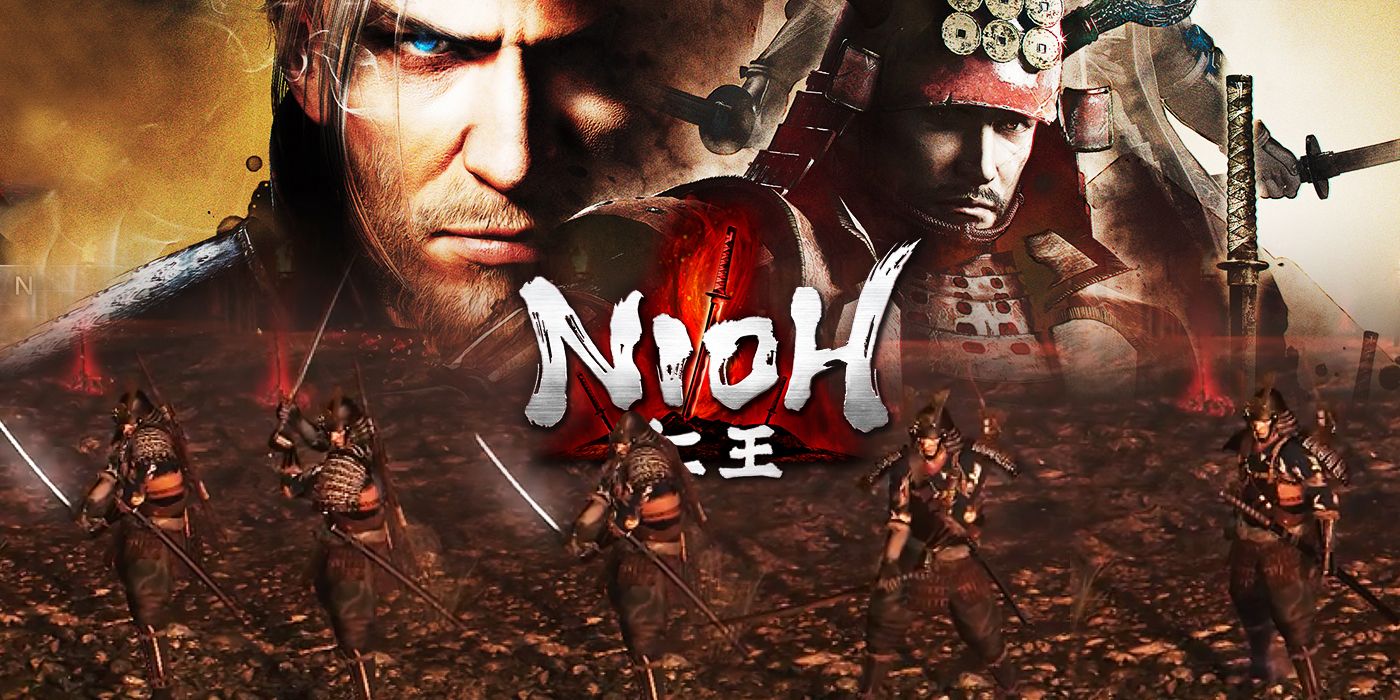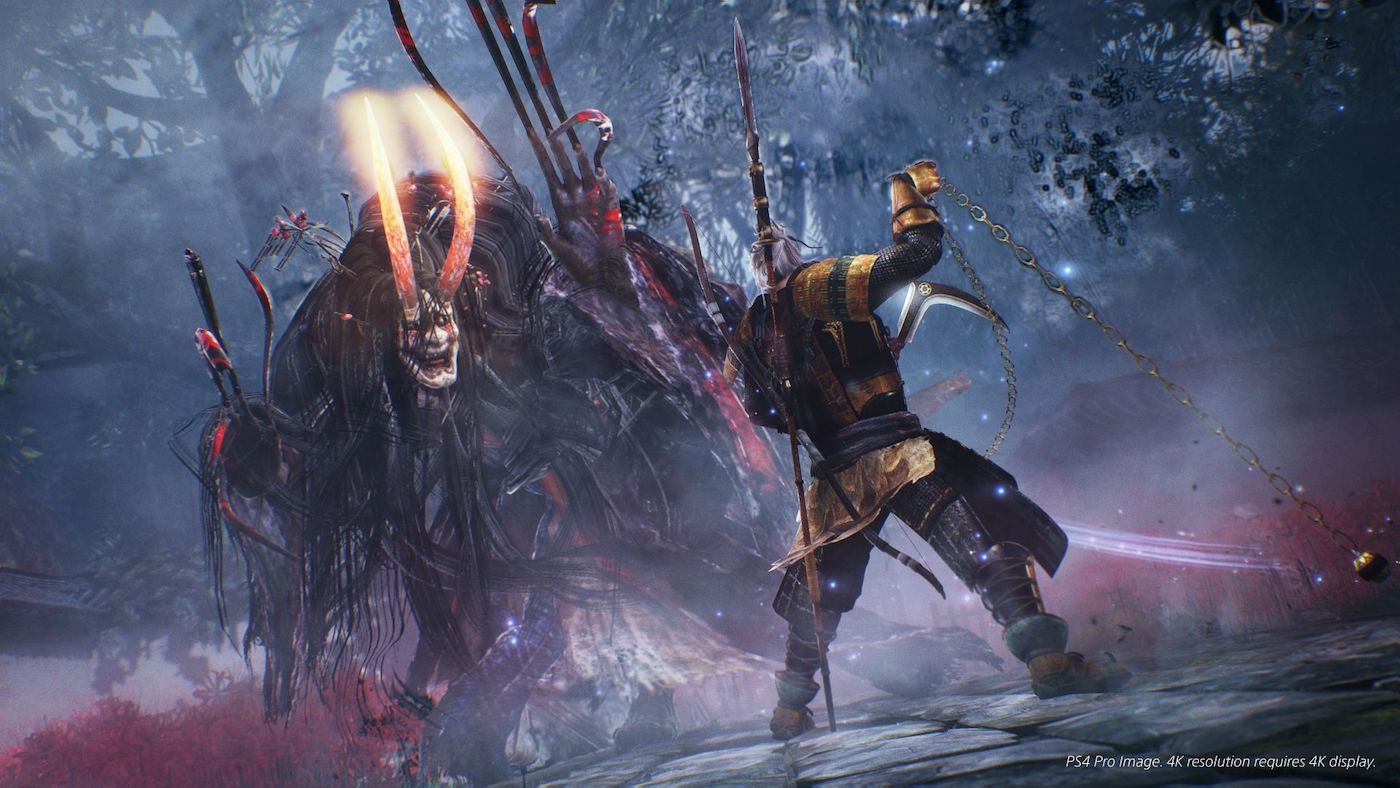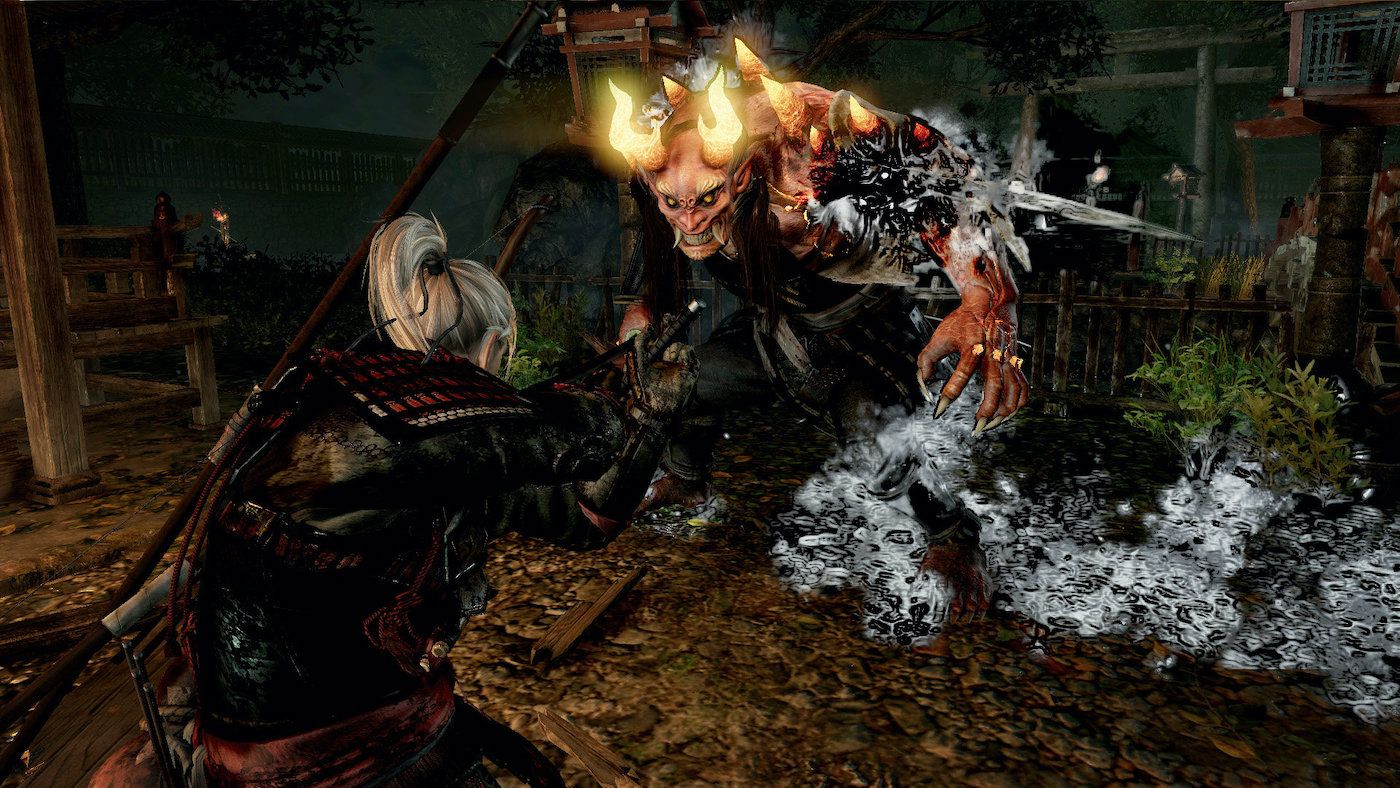It isn’t a stretch to say that Dark Souls has had a massive impact on the current gaming landscape. Once a vague spiritual successor to Demon's Souls, the title has given birth to its very own genre: Soulslike. And while there have been some notable standouts, there are a number of games that merely adopt the mechanics of Dark Souls without ever evolving them past the core concepts. Slap on a stamina meter, some heavy-hitting enemies with limited player healing, and you can call your game a Soulslike. And while this type of gameplay can be adapted into alternate settings from the medieval aesthetic of Dark Souls for a novel experience, there are few Soulslikes that feel like a true evolution of the genre from a combat perspective. However, there is one game that takes the core tenets of Dark Souls’ combat and manages to genuinely innovate in a way that feels simultaneously familiar as well as unique. That game is Nioh, and the way it achieves this is deceptively simple.
In most Soulslike games, success in combat relies on being able to react to your opponent’s moves and recognizing openings for when to attack. However, the manner in which you do so is usually the same at the start of the game as it is at the end. Different weapon types can bring different attack animations to the table to help spice things up a bit, but oftentimes it all boils down to deciding whether to use a light attack or a heavy attack. And this works for Dark Souls in particular, as the enemy designs are unique enough that the fun comes from utilizing your familiarity with your weapon against an unfamiliar attack pattern until you can conquer it. But while it is satisfying, it can be said that Dark Souls’ style of combat can feel one-dimensional and even a bit repetitive after extended periods of time.
Nioh’s brilliance comes from how it takes this basic combat idea and multiplies it by three, using called a stance system. In Nioh, no matter what weapon the player is using, they will be able to use one of 3 stances: High, Mid, and Low. Players can swap between each stance at will during combat without penalty, and each stance has a light attack and heavy attack. Low Stance is best suited for dodging, with lower stamina consumption (known as Ki in-game) and greater control when avoiding attacks. However, its damage is lower than High and Mid Stance, so it should only be used for evasive tactics or quick repositioning. High Stance is purely focused on offense, with much greater damage than Mid or Low Stance, with an increased ability to break an opponent’s guard as well. This comes with a trade-off of increased Ki consumption and a slower dodge, meaning it should only be used when you have enough time to recover from your attacks. Mid Stance is the balance between the two, with adequate damage and an emphasis on blocking rather than dodging. At first glance, this may not seem much different from Dark Souls’ core combat mechanics - dodging, blocking, attacking, and stamina management are still key principles that players will have to learn in order to survive Nioh’s encounters. However, what this system gives players is crucial to evolving the combat of Soulslikes. Above all, Nioh’s Stance system gives players more options.
In Dark Souls, your only options, offensively, are light attack or heavy attack. Different weapons may have varied animations, but your shortsword is only ever going to have two ways to swing it. With the Stance system, your options are instantly tripled, allowing players to adapt their strategy based on both their opponents and the current state of the battle. They can adopt a Low Stance at the start of a battle, feeling out their opponent’s moveset until they feel confident enough to strike, instantly swapping to High Stance once an opening is discovered. Against enemies whose moveset they’ve become familiar with, High Stance becomes a more viable option to exploit holes in their defence. There is an argument to be made that all these extra stances and moves are just fluff, mistaking complexity for depth. And in the early game, this critique feels valid, as players can definitely find success staying in Mid Stance and playing the game just like Dark Souls.
However, as enemies grow in strength and complexity, players will need to grow familiar with the stances and their applications in combat to seize any advantage they can get. To put it simply, Nioh is hard, even for a seasoned Dark Souls veteran. Enemies can kill you in a handful of hits, and mistakes are punished almost vindictively so. Players who don’t abuse the increased damage in High Stance will find some of the tougher enemies take much longer to kill in the more defensive Stances. On the other hand, players who overstay their welcome in High Stance will be easier to hit. After all, all the damage in the world doesn’t mean much when you’re dead before you can dish it out. Each Stance has its own share of strengths and weaknesses, meaning players will have to be swapping fairly consistently in order to stay one step ahead of the game’s challenges.
This level of complexity also means that there is a much higher skill ceiling in Nioh than the average Soulslike. Nioh admittedly does have a fairly steep learning curve at the start, and there are certainly going to be players who are frustrated by it. However, as the game goes on, you begin to intuit a feel for each Stance as well as which situations call for a specific approach. Watching a practiced Nioh player has a much more fluid, frenetic feel to it than watching the comparatively methodical approach Dark Souls tends to require. Once you feel the rhythm of Nioh, it begins to feel that the only limit to what you can accomplish is your own level of proficiency. This makes failure (while still nail-bitingly frustrating at times) slightly more palatable as well. With such flexibility in how you’re able to approach each encounter, death feels more like a mistake you could have avoided had you simply played better. Which gives players the drive to dust themselves off and try, try again.
Much of Dark Souls’ brilliance comes from its simplicity, and with simplicity comes greater accessibility, which is a commendation in its own right. However, Nioh’s approach to the Soulslike genre proves that there is still room to build upon that simple foundation. By splitting the core mechanics of Dark Souls’ combat into distinct options the player can opt into at any time, it creates a uniquely complex style of gameplay that allows for creativity and adaptation far beyond the binary system of light attack and heavy attack. Nioh won’t be dethroning Dark Souls any time soon, but it’s a hopeful reminder that in a genre as saturated as Soulslike is, there are still steps forward left to take.



